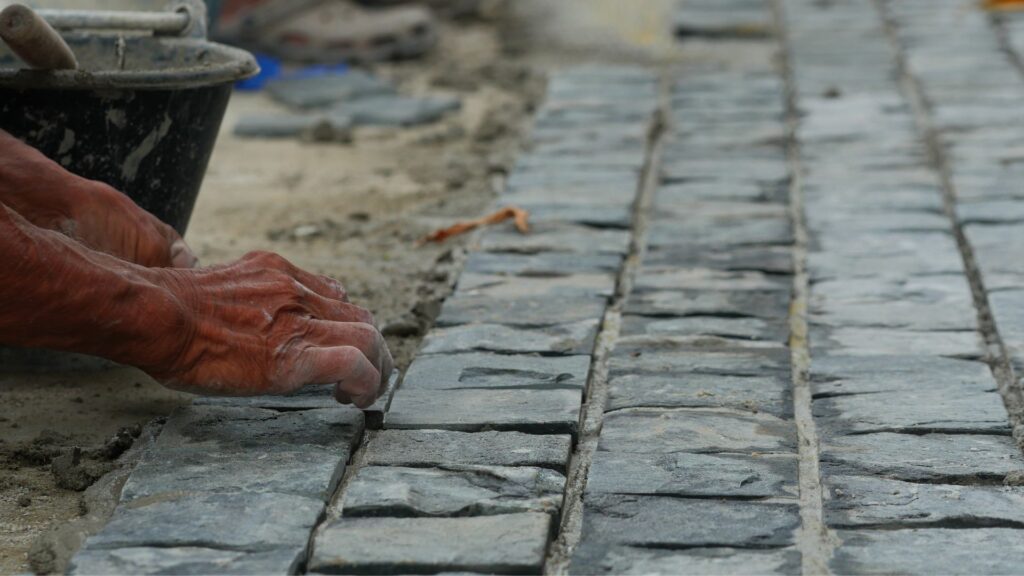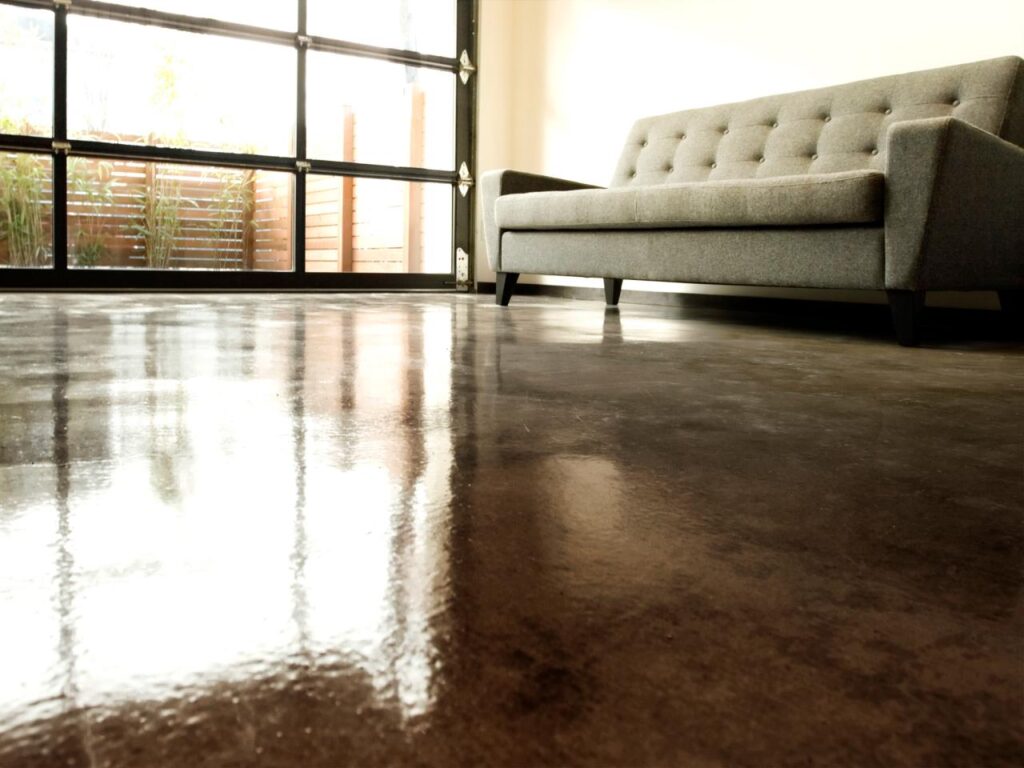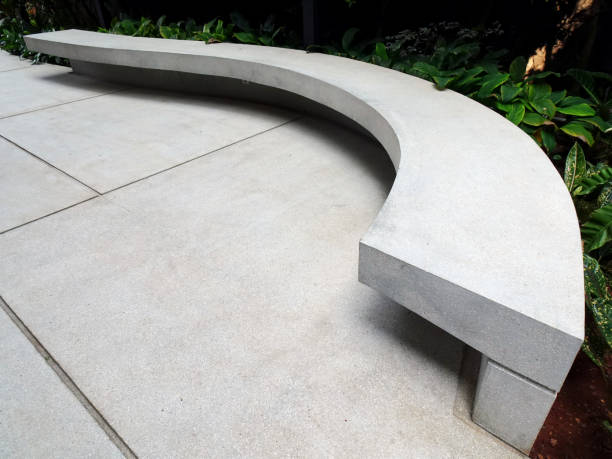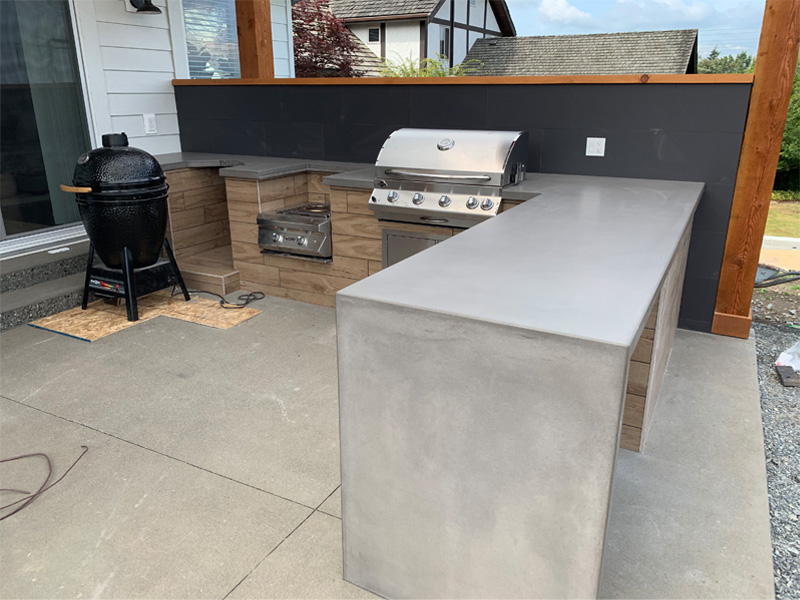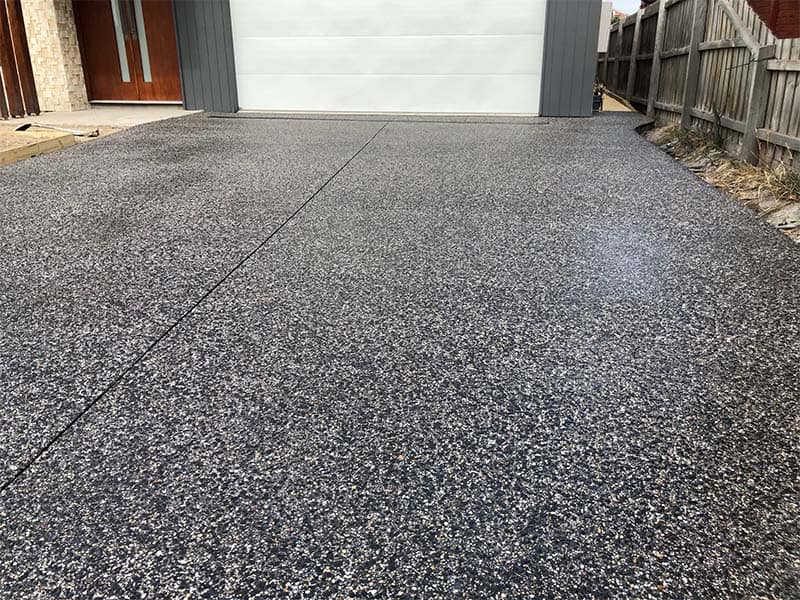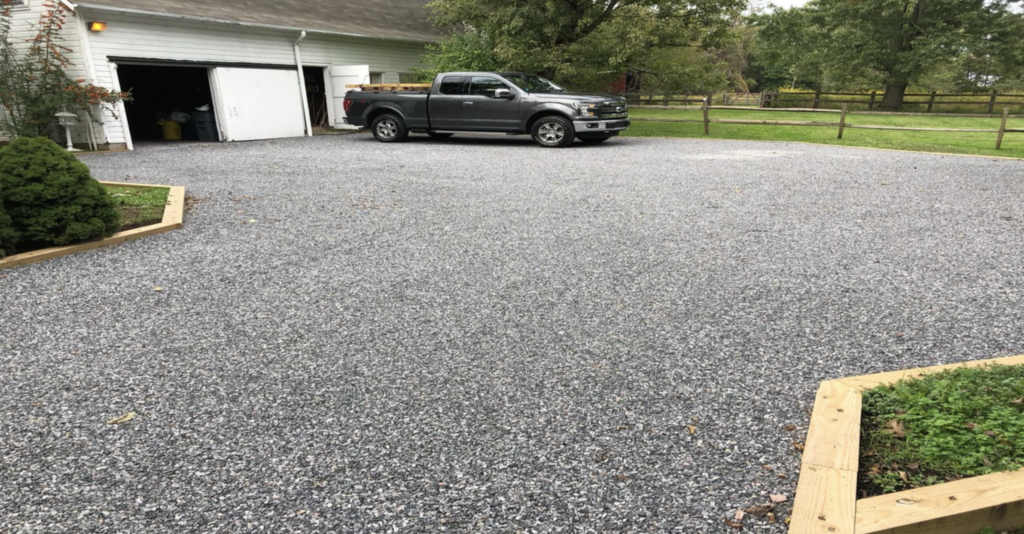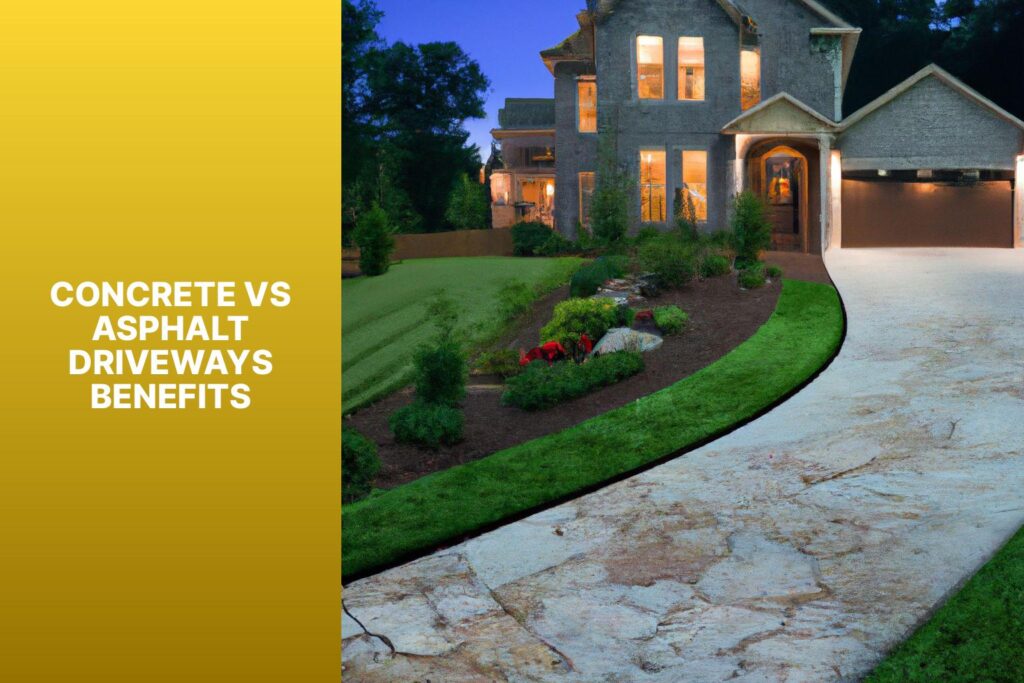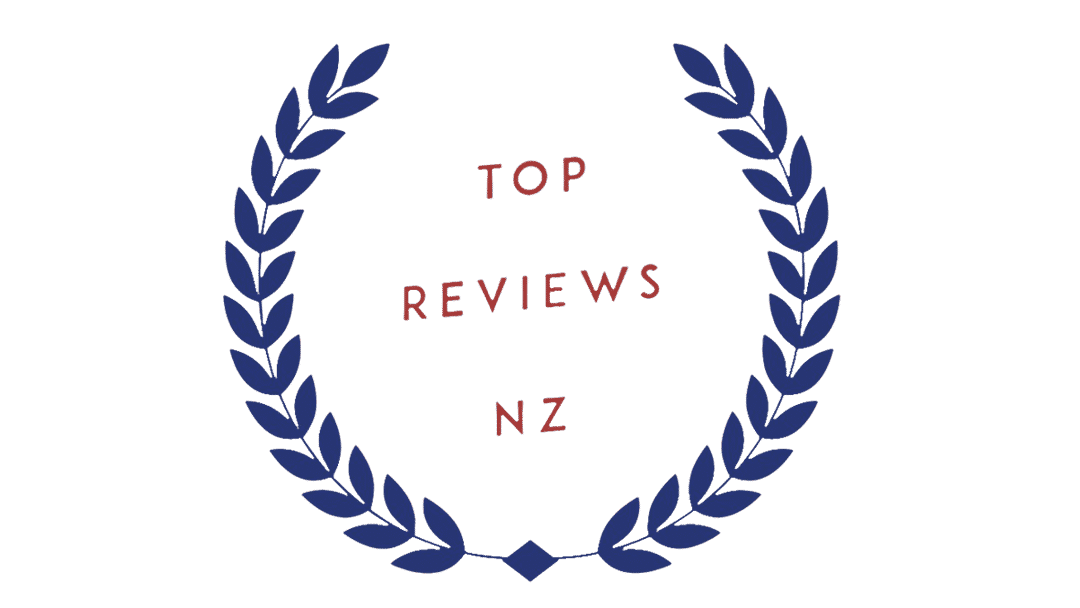Welcome to our comprehensive guide on why concrete is the most effective option for paving projects. Whether you’re planning a new driveway, a sidewalk, or even a large-scale commercial project, choosing the right paving material is crucial for ensuring durability, cost-effectiveness, and long-term performance. With so many options available—like asphalt, gravel, and concrete—making the best choice can be challenging. In this post, we’ll explore the many benefits of using concrete, from its unmatched strength and longevity to its environmental advantages and versatility. By the end, you’ll understand why concrete stands out as the superior choice for various paving needs, helping you make an informed decision for your next project.
Concrete is the most effective option for paving projects due to its durability, cost-effectiveness, and versatility. It offers a long lifespan, requires minimal maintenance, and can withstand heavy traffic and weather conditions. Additionally, concrete is environmentally friendly, with options for decorative finishes that enhance its aesthetic appeal, making it ideal for residential, commercial, and industrial applications.
- Understanding Paving Materials: An Overview
- The Benefits Of Concrete For Paving Projects
- Environmental Benefits Of Concrete Paving
- Versatility Of Concrete In Various Paving Projects
- Concrete Vs. Other Paving Materials: A Comparative Analysis
- Addressing Common Misconceptions About Concrete Paving
- Best Practices For Using Concrete In Paving Projects
- Real-Life Examples Of Successful Concrete Paving Projects
- FAQs: About Why Is Concrete The Most Effective Option For Paving Projects?
- What makes concrete a better choice for paving projects than asphalt or gravel?
- Is concrete more expensive than other paving materials?
- How does concrete contribute to environmental sustainability?
- Can concrete be used in all climates for paving projects?
- What are the aesthetic options available with concrete paving?
- How does the installation process of concrete paving differ from other materials?
- What maintenance is required for concrete paving to ensure its longevity?
- Are there any downsides to using concrete for paving projects?
- How does concrete handle heavy traffic compared to other paving materials?
- How long does a concrete paving project typically last?
- Conclusion
Understanding Paving Materials: An Overview
When planning a construction project, whether it’s a new driveway, a patio, or a walkway, choosing the right paving material is crucial. The material you select not only affects the aesthetics of the finished project but also its durability, maintenance requirements, and overall cost. In this overview, we’ll dive into what paving materials are, explore some of the most common types used in construction, and highlight the unique advantages of concrete paving.
What are Paving Materials?
Paving materials refer to the various types of materials used to create a hard, stable surface suitable for foot or vehicular traffic. These materials are foundational in numerous construction projects, providing both functional and decorative elements. Paving materials are chosen based on factors such as the intended use of the area, the load it needs to bear, environmental conditions, and aesthetic preferences.
They serve multiple purposes: from forming the base of roads and driveways to creating beautiful, durable surfaces for patios, walkways, and plazas. Paving materials are designed to withstand weather elements, resist wear and tear from traffic, and provide a safe, non-slip surface. When chosen correctly, they enhance the overall appearance of the space and contribute to its long-term usability and safety.
Common Types of Paving Materials
There are several popular types of paving materials, each offering distinct benefits and drawbacks depending on the project requirements. Let’s take a look at some of the most commonly used options:
1. Asphalt: Known for its smooth, black appearance, asphalt is a common choice for driveways and roads. It’s relatively cost-effective and quick to install. Asphalt is flexible, which allows it to withstand minor shifts in the ground beneath it, making it less prone to cracking than some other materials. However, it requires regular maintenance, including sealing and repairs to keep it in good condition over time.
2. Gravel: Gravel is another widely used paving material, especially for rural or less formal settings. It offers excellent drainage and is relatively inexpensive. Gravel is easy to install and provides a rustic, natural look that many homeowners find appealing. However, gravel can be less stable underfoot, and its loose nature means it requires frequent raking and replenishment to maintain an even surface.
3. Concrete: Concrete is a versatile paving material used in a variety of applications, from residential driveways to commercial walkways and public spaces. It is composed of cement, water, and aggregates like sand or gravel, mixed to form a hard, durable surface. Concrete is known for its strength and longevity, making it an ideal choice for areas with heavy foot or vehicle traffic.
Focus on Concrete
Among the various paving materials available, concrete stands out for several reasons. One of the primary advantages of concrete is its durability. Unlike asphalt, which requires frequent maintenance and can deteriorate quickly under harsh conditions, concrete can last for decades with minimal upkeep. It is resistant to weathering, chemical spills, and heavy loads, making it an excellent choice for both residential and commercial projects.
Additionally, concrete offers a high degree of versatility. It can be molded into various shapes and patterns, and it can be colored, stamped, or textured to match the surrounding environment or desired aesthetic. This flexibility allows homeowners and designers to create unique, visually appealing surfaces that enhance the property’s overall value and curb appeal.
Another notable advantage of concrete is its low maintenance requirements. Unlike gravel, which needs regular raking, or asphalt, which needs resealing, concrete requires very little maintenance once installed. Occasional cleaning and sealing are usually enough to keep it looking new for years. This can translate into significant cost savings over the lifespan of the surface.
In summary, while there are many paving materials to choose from, concrete offers a unique combination of durability, versatility, and low maintenance that makes it an attractive option for a wide range of applications. Whether you are paving a driveway, a garden path, or a commercial walkway, considering concrete could provide a long-lasting, aesthetically pleasing solution that meets your needs.

The Benefits Of Concrete For Paving Projects
When it comes to selecting materials for paving projects, concrete stands out as a popular choice due to its numerous benefits. From its remarkable durability to its cost-effectiveness and strength, concrete offers several advantages that make it ideal for a wide range of applications. Let’s explore these benefits in detail to understand why concrete is often the preferred material for paving projects.
Durability and Longevity
One of the most significant benefits of concrete for paving projects is its durability. Concrete is renowned for its ability to withstand harsh weather conditions, heavy loads, and constant use. Unlike other materials that may crack, warp, or deteriorate over time, concrete remains strong and intact for decades. This durability translates to a longer lifespan, meaning that concrete surfaces often require minimal maintenance to keep them in good condition.
When comparing the lifespan of concrete to other materials like asphalt or gravel, concrete often outperforms them significantly. For instance, while asphalt might need resurfacing or repairs every few years, a well-laid concrete surface can last for over 30 years with proper care. This longevity not only provides peace of mind to property owners but also represents a more sustainable choice, reducing the frequency of repairs and replacements.
Moreover, the long-term value of concrete is evident when considering its performance over time. While the initial installation cost might be slightly higher than some alternatives, the reduced need for maintenance and repairs over the years makes concrete a cost-effective choice in the long run. This makes concrete an ideal option for anyone looking to invest in a paving material that offers both resilience and lasting value.
Cost-Effectiveness
Concrete is not only durable but also cost-effective, especially when considering its long-term benefits. While the upfront cost of concrete may be higher compared to materials like asphalt or gravel, it’s essential to factor in the long-term savings that concrete provides. Concrete requires less frequent maintenance, and its repairs are generally less costly, leading to significant savings over time.
For example, asphalt surfaces are prone to cracking and potholes, necessitating regular repairs and resurfacing to maintain a smooth and safe surface. In contrast, concrete is less susceptible to these issues, resulting in fewer repairs and lower maintenance costs. This reduced need for maintenance directly translates to cost savings for property owners.
Furthermore, the durability of concrete means that it does not degrade as quickly as other materials. This longevity minimizes the need for replacement, offering additional financial benefits. Over the lifespan of a concrete surface, property owners can expect to save a considerable amount of money on maintenance and repairs, making concrete a wise investment for any paving project.
Strength and Load-Bearing Capacity
Another key advantage of concrete for paving projects is its exceptional strength and load-bearing capacity. Concrete is incredibly strong and capable of supporting heavy loads without cracking or deforming. This makes it an ideal material for high-traffic areas, such as highways, driveways, and parking lots, where strength and durability are crucial.
In high-traffic areas, the material used for paving must be able to withstand the constant pressure of vehicles, including heavy trucks and equipment. Concrete’s ability to support such loads without significant wear and tear is one of the reasons it is preferred for these applications. For example, highways and major roads often use concrete because it can handle the heavy loads and frequent use without requiring frequent repairs.
Similarly, concrete is also an excellent choice for residential driveways and commercial parking lots. These areas experience constant vehicle traffic, and using a material like concrete ensures that the surface remains smooth and safe for years. The load-bearing capacity of concrete provides added assurance that the paved surface will not develop cracks or potholes, maintaining both its functionality and aesthetic appeal.
In conclusion, the benefits of concrete for paving projects are clear. Its durability and longevity mean that it can withstand the test of time with minimal maintenance. Its cost-effectiveness ensures long-term savings, while its strength and load-bearing capacity make it suitable for a wide range of applications. Whether you are considering a new driveway, parking lot, or roadway, concrete offers a reliable, durable, and economical solution for your paving needs.

Environmental Benefits Of Concrete Paving
Concrete paving offers numerous environmental benefits that make it a compelling choice for sustainable construction and landscaping projects. As we become more conscious of our environmental footprint, the materials we choose for building and paving play a crucial role in promoting sustainability. Concrete, a versatile and durable material, stands out not just for its strength and longevity but also for its eco-friendly attributes.
Eco-Friendly Material
One of the primary reasons concrete is considered environmentally friendly is its composition. Concrete is made primarily from natural ingredients, including water, sand, gravel, and cement. Most of these materials can be sourced locally, which reduces the need for long-distance transportation and, consequently, lowers carbon emissions. This reliance on locally available resources minimizes the environmental impact associated with the extraction, processing, and transport of raw materials.
Moreover, concrete is highly recyclable. When a concrete structure or pavement reaches the end of its life cycle, it doesn’t have to end up in a landfill. Instead, it can be crushed and repurposed as aggregate for new concrete or other construction applications. This recycling process not only conserves natural resources but also reduces waste, making concrete a sustainable choice in the long run. By using recycled concrete, the construction industry can significantly cut down on its carbon footprint, contributing to a more circular economy where materials are reused rather than discarded.
Energy Efficiency
Concrete’s environmental benefits extend beyond its production and recyclability. One notable advantage is its ability to contribute to energy efficiency. Light-colored concrete, in particular, can help mitigate the urban heat island effect—a phenomenon where urban areas experience higher temperatures than their rural surroundings due to human activities. This occurs because darker materials like asphalt absorb more heat, causing urban areas to retain heat. In contrast, light-colored concrete reflects more sunlight, keeping surfaces cooler and reducing the overall temperature in urban environments.
By reducing the heat island effect, concrete paving can lead to significant energy savings. Cooler pavement surfaces mean that less energy is required to cool nearby buildings, leading to lower air conditioning costs and reduced energy consumption. This energy efficiency translates to lower greenhouse gas emissions, contributing to the fight against climate change. Furthermore, the cooler surfaces provided by concrete can improve the comfort of pedestrians and cyclists, promoting outdoor activities and reducing reliance on vehicles.
Reduced Environmental Impact Over Time
Another significant environmental advantage of concrete paving is its durability and longevity. Unlike other paving materials that may require frequent repairs or replacement, concrete is known for its long life span. A well-constructed concrete pavement can last for decades with minimal maintenance. This durability reduces the need for frequent repairs, which in turn lowers the consumption of materials and energy required for maintenance activities.
The less frequent need for repairs and replacement means fewer disruptions and less waste generation over time. This not only conserves resources but also reduces the environmental impact associated with manufacturing, transporting, and installing new materials. Additionally, concrete’s durability means fewer emissions from construction equipment and vehicles involved in repair and maintenance work. Over its life cycle, concrete paving proves to be a cost-effective and environmentally friendly option, requiring less energy, fewer materials, and generating less waste compared to other paving alternatives.
In conclusion, concrete paving offers a range of environmental benefits that make it a sustainable choice for modern construction projects. From its eco-friendly composition and recyclability to its role in enhancing energy efficiency and its reduced environmental impact over time, concrete stands out as a material that supports both durability and sustainability. As we continue to seek ways to minimize our environmental footprint, choosing materials like concrete that offer long-term benefits can make a significant difference.

Versatility Of Concrete In Various Paving Projects
Concrete is a highly versatile material that stands out in numerous paving projects, providing unmatched adaptability and durability across different settings. Whether you’re planning a residential patio, a commercial sidewalk, or an industrial floor, concrete’s flexibility and strength make it an ideal choice for a wide range of applications. In this section, we’ll explore the versatility of concrete in various paving projects, focusing on its adaptability to different designs and suitability for multiple applications.
Adaptability to Different Designs
One of the most compelling features of concrete is its remarkable adaptability to different design needs. Unlike many other paving materials, concrete can be customized to achieve a wide array of aesthetics and functionalities. This flexibility extends to both the surface appearance and the structural shape of the pavement.
Concrete can be stamped, colored, and textured to mimic other materials, such as brick, slate, or even wood, providing a decorative appeal without sacrificing durability. This makes it an excellent choice for homeowners looking to enhance their outdoor living spaces with stylish patios or walkways that complement their home’s design. The variety of decorative options available allows for creative freedom in designing pavements that are unique and visually appealing.
Moreover, concrete can be molded into various shapes and patterns, accommodating custom designs that meet specific project requirements. This is particularly advantageous in urban landscapes where paving designs need to fit around existing structures or accommodate unique architectural styles. From curved pathways to geometric patterns, concrete’s malleability ensures that it can be shaped to suit any design vision, making it a preferred material for architects and landscapers alike.
Suitability for Various Applications
Concrete’s versatility isn’t limited to its design flexibility—it also shines in its suitability for a diverse range of applications. This material is used across residential, commercial, and industrial settings, proving its worth in both aesthetic and functional roles.
In residential projects, concrete is commonly used for driveways, sidewalks, patios, and garden pathways. Its durability and low maintenance requirements make it a practical choice for homeowners who want long-lasting outdoor surfaces that can withstand the elements. Additionally, concrete can handle the wear and tear of daily use, from foot traffic to the weight of vehicles, without showing significant signs of deterioration.
In commercial settings, concrete is the go-to material for sidewalks, parking lots, and public plazas. Its ability to endure heavy pedestrian traffic and support large loads without cracking makes it ideal for areas with high footfall. Furthermore, concrete’s resistance to weathering and its relatively low upkeep costs ensure that commercial spaces remain safe and functional for years.
Industrial applications also benefit significantly from the strength and durability of concrete. Industrial flooring, for instance, requires materials that can withstand heavy machinery, chemical spills, and constant use. Concrete provides a robust solution that meets these demanding conditions, making it the preferred choice for factories, warehouses, and other industrial facilities.
Concrete is also favored for infrastructural projects like highways, bridges, and airport runways, where performance and longevity are crucial. Its ability to be reinforced with steel rebar or fibers allows it to handle immense loads and withstand environmental stresses, making it a vital component in large-scale construction projects.
Examples of Concrete Paving Projects
To illustrate the versatility of concrete, consider the following examples of different paving projects:
- Sidewalks and Walkways: Concrete is often used for city sidewalks and residential walkways due to its durability, ease of maintenance, and ability to be customized with various finishes.
- Patios and Outdoor Living Spaces: Homeowners frequently choose concrete for patios because it can be tailored to replicate more expensive materials like stone or tile, providing an affordable yet aesthetically pleasing option.
- Industrial Flooring: In factories and warehouses, concrete flooring is essential due to its ability to withstand heavy machinery and frequent use without significant wear.
- Driveways: Concrete driveways are popular in residential areas for their durability and ability to support the weight of multiple vehicles.
- Commercial Plazas and Public Spaces: These areas benefit from concrete’s durability and low maintenance requirements, as well as its ability to be formed into attractive designs that enhance public environments.
In conclusion, the versatility of concrete in paving projects is evident in its adaptability to various designs and suitability for diverse applications. Whether for residential, commercial, or industrial use, concrete provides a reliable, durable, and aesthetically pleasing solution that meets a wide range of paving needs. Its ability to be customized in terms of appearance and structure makes it a top choice for many projects, ensuring that it remains a staple in construction and landscaping for years to come.

Concrete Vs. Other Paving Materials: A Comparative Analysis
When choosing the right paving material for driveways, walkways, or patios, it’s crucial to understand the advantages and drawbacks of each option. This analysis focuses on concrete, asphalt, and gravel, highlighting their unique characteristics and helping you decide which material best suits your needs.
Concrete vs. Asphalt
Concrete and asphalt are two of the most popular paving materials, but they differ significantly in several key areas:
1. Durability: Concrete is known for its exceptional durability. It can withstand heavy loads and harsh weather conditions, making it an excellent choice for driveways and high-traffic areas. In contrast, asphalt is more susceptible to damage from extreme heat and cold. Over time, asphalt tends to crack and develop potholes, especially in regions with fluctuating temperatures. Concrete, on the other hand, has a longer lifespan, often lasting 30 years or more with minimal maintenance.
2. Maintenance: While both materials require some upkeep, concrete generally needs less frequent maintenance than asphalt. Asphalt surfaces need regular sealing every few years to maintain their integrity and appearance, whereas concrete only requires sealing every few decades. Additionally, concrete is less prone to surface damage, reducing the need for repairs over its lifetime. This makes concrete a more low-maintenance option for those looking to invest in a long-term paving solution.
3. Cost: Upfront, asphalt tends to be less expensive than concrete, making it an attractive option for those on a tight budget. However, when you factor in the cost of maintenance, repairs, and shorter lifespan, concrete often proves to be more cost-effective in the long run. Concrete’s longevity and durability can save homeowners significant amounts of money over time, offsetting the higher initial investment.
4. Environmental Impact: Concrete is a more environmentally friendly choice compared to asphalt. Asphalt is derived from petroleum, a non-renewable resource, and its production process generates significant greenhouse gas emissions. Concrete, however, is made from abundant natural materials such as limestone and clay, and new advancements in concrete technology have reduced its environmental footprint. Additionally, concrete’s lighter color reflects more sunlight, reducing heat absorption and contributing to lower urban heat island effects.
Concrete vs. Gravel
Gravel is another popular paving material, often chosen for its low cost and rustic appearance. However, it differs significantly from concrete in several critical aspects:
1. Application: Gravel is typically used for rural driveways, garden paths, or areas that do not require a perfectly smooth surface. It is easy to install and can be a quick fix for temporary or low-traffic areas. Concrete, however, provides a solid, stable surface that is ideal for urban and suburban driveways, sidewalks, and patios. It offers a smooth, polished finish that is more suitable for residential and commercial applications requiring a clean and professional look.
2. Longevity: Concrete is far superior to gravel when it comes to longevity. While gravel surfaces can quickly become uneven and require regular raking and replenishing, concrete remains stable and intact for decades. Gravel is prone to displacement by vehicles and weather, often requiring frequent replacement. In contrast, a properly installed concrete surface can last for decades with minimal maintenance, providing a long-term solution that gravel simply cannot match.
3. Aesthetic Appeal: When it comes to curb appeal, concrete offers a range of design possibilities that gravel cannot. Concrete can be stamped, stained, or textured to mimic the look of natural stone, brick, or tile, providing a versatile solution for those looking to enhance their outdoor spaces. Gravel, while available in different colors and sizes, lacks the refined look of concrete and may not suit all architectural styles. If aesthetics and design flexibility are essential, concrete is the clear winner.
Why Concrete Stands Out
In comparing concrete to other paving materials such as asphalt and gravel, it’s evident why concrete is often considered the superior choice. Its unmatched durability ensures that it can handle heavy traffic and harsh weather conditions without cracking or crumbling. The low maintenance requirements and long lifespan make concrete a cost-effective solution in the long run, despite the higher initial investment. Furthermore, concrete’s environmental benefits, design flexibility, and ability to enhance curb appeal make it an excellent choice for various applications.
Concrete’s versatility, durability, and aesthetic appeal position it as the top choice among paving materials. Whether you’re looking to pave a driveway, create a stunning patio, or design a functional walkway, concrete provides a reliable and attractive solution that stands the test of time.
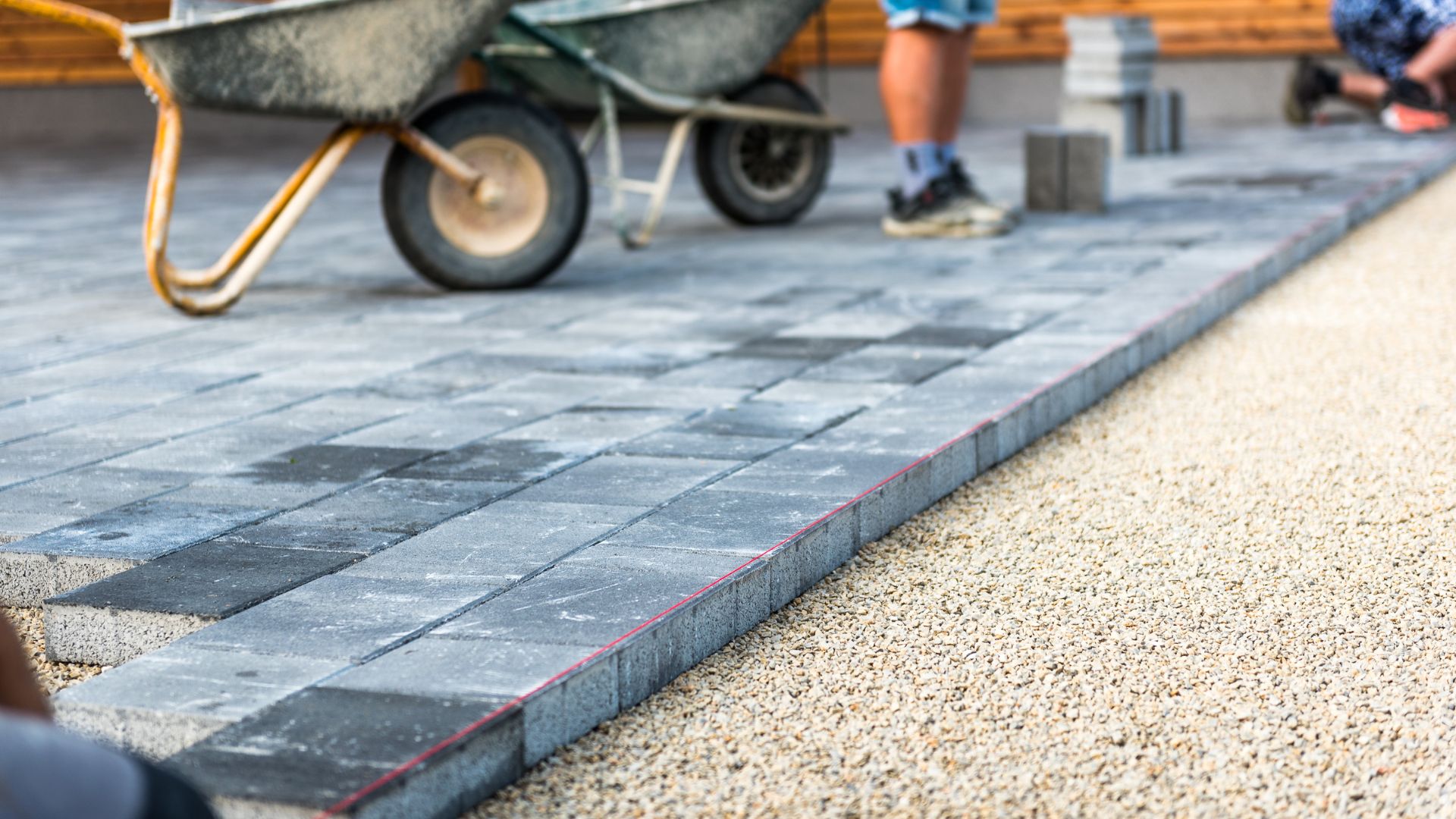
Addressing Common Misconceptions About Concrete Paving
Concrete paving is a popular choice for driveways, patios, and walkways, but several misconceptions often deter homeowners and businesses from considering it as a viable option. Let’s address some of these common myths to provide a clearer understanding of why concrete paving is a practical and attractive choice.
Concrete is Too Expensive
One of the most prevalent misconceptions about concrete paving is that it is too expensive compared to other materials. While the initial cost of concrete might be higher than some alternatives, such as asphalt or gravel, it’s important to consider the long-term financial benefits. Concrete is an incredibly durable material that can last for decades with minimal maintenance. Unlike asphalt, which requires regular sealing and resurfacing, or gravel, which needs frequent replenishment and leveling, concrete’s robust nature means that homeowners will spend less on repairs and maintenance over the life of the pavement.
Additionally, concrete is less prone to damage from extreme weather conditions. It can withstand heavy loads without deforming or developing ruts, which is particularly advantageous for driveways and commercial spaces with high traffic volumes. The reduced need for repairs translates into significant savings over time. When you factor in these long-term savings, the total cost of ownership for concrete paving becomes much more competitive, often making it the more economical choice in the long run.
Concrete is Not Aesthetically Pleasing
Another common myth is that concrete lacks aesthetic appeal and is simply a dull, grey slab. This could not be further from the truth. Modern decorative techniques have revolutionized the look and feel of concrete surfaces. Today, concrete can be customized to complement any style or design preference, making it a versatile option for various settings.
Stamping is a popular technique that allows concrete to mimic the appearance of more expensive materials such as brick, slate, or stone. This method involves pressing molds into freshly poured concrete to create patterns that resemble natural textures. Coloring is another technique that adds vibrancy and character to concrete surfaces. Integral color additives, stains, and dyes can be used to achieve a wide range of hues, from subtle earth tones to bold, eye-catching colors. Polishing is yet another option, providing a sleek, glossy finish that enhances the natural beauty of the concrete. These techniques can be used individually or in combination to create a unique look that elevates the visual appeal of any outdoor space.
With these decorative options, concrete paving is far from boring. It offers endless possibilities for personalization, allowing homeowners to achieve a high-end look at a fraction of the cost of natural stone or pavers.
Concrete is Prone to Cracking
Concerns about cracking are another reason some people hesitate to choose concrete paving. While it is true that concrete can crack, it’s important to understand that cracking is not an inevitable outcome. Cracking typically occurs due to poor installation practices, inadequate base preparation, or improper curing. However, when concrete is installed correctly, with the appropriate control joints and reinforcement, the risk of cracking can be significantly minimized.
Proper site preparation is critical to the longevity of a concrete surface. This involves ensuring a stable, well-compacted base that can support the weight of the concrete and any anticipated loads. Control joints are strategically placed cuts that help prevent random cracking by allowing the concrete to expand and contract with temperature changes. Additionally, reinforcing materials such as steel rebar or wire mesh can be embedded within the concrete to add tensile strength and distribute loads more evenly, further reducing the likelihood of cracks.
Regular maintenance also plays a role in preventing cracks. Sealing concrete surfaces periodically can protect them from moisture penetration, freeze-thaw cycles, and the damaging effects of chemicals such as de-icing salts. Promptly addressing minor cracks or surface imperfections can prevent them from expanding into larger problems.
In summary, while concerns about cracking are understandable, they are largely preventable with proper installation and maintenance. By choosing a qualified contractor who understands the intricacies of concrete paving, homeowners can enjoy a durable, long-lasting surface that remains crack-free for many years.
Concrete paving offers a range of benefits that make it a practical choice for both residential and commercial applications. By debunking these common misconceptions, it becomes clear that concrete is not only cost-effective in the long run but also versatile in appearance and highly durable when properly installed. Whether you’re looking for a sleek, modern driveway or a beautifully textured patio, concrete paving has the potential to meet and exceed your expectations.

Best Practices For Using Concrete In Paving Projects
Concrete is a popular material choice for paving projects, thanks to its durability, versatility, and cost-effectiveness. However, to maximize the benefits of concrete, it’s essential to adhere to best practices from installation to maintenance. Let’s explore some key considerations that can ensure your concrete paving project stands the test of time.
Proper Installation Techniques
When it comes to concrete paving, the foundation of success lies in proper installation. Hiring a professional contractor with experience in concrete work is crucial. Experienced contractors bring a wealth of knowledge about the best practices, tools, and materials needed for a successful installation. Here are some tips to consider:
- Research and Vet Contractors: Look for contractors with strong reputations and positive reviews. Ask for references and examples of previous work to gauge their experience and reliability.
- Get Detailed Quotes: Ensure that the contractor provides a detailed quote that outlines all costs, from materials to labor. This helps avoid unexpected expenses and ensures transparency.
- Ensure Proper Base Preparation: The longevity of concrete paving largely depends on the quality of the base. A well-prepared base will prevent common issues like cracking and settling. The base should be compacted properly, and any debris or organic material must be removed to ensure a stable foundation.
- Pay Attention to Curing: Proper curing of concrete is critical to achieving maximum strength and durability. This process involves maintaining adequate moisture and temperature conditions for a specified period, allowing the concrete to harden and develop its full strength. Skipping or rushing this step can lead to weak, brittle concrete.
By investing in professional installation and adhering to best practices, you can significantly extend the lifespan of your concrete paving project.
Maintenance Tips to Extend Lifespan
Concrete is known for its low maintenance requirements, but this doesn’t mean it should be neglected. Regular maintenance can greatly extend the lifespan of your concrete surface and keep it looking its best. Here are some practical maintenance tips:
- Regular Cleaning: Keep your concrete surfaces clean by removing dirt, debris, and stains. Regular sweeping and occasional power washing can help prevent the buildup of grime and prevent stains from setting in.
- Seal the Surface: Applying a quality sealer to your concrete can provide an extra layer of protection against moisture, stains, and wear. Sealing should be done every 2-3 years, depending on the traffic and exposure to the elements.
- Repair Cracks Promptly: Small cracks can quickly expand if left unattended, especially in areas with frequent freeze-thaw cycles. Use a concrete patching compound to fill minor cracks and prevent further damage.
- Avoid Harsh Chemicals: De-icing salts and harsh chemicals can deteriorate the concrete surface over time. Instead, use sand or cat litter for traction in icy conditions and avoid using strong acids for cleaning.
By following these simple maintenance practices, you can protect your investment and keep your concrete surfaces in top condition for many years.
Considerations for Different Climates
Concrete is a versatile material that performs well in a variety of climates, but specific considerations should be taken into account depending on your local environment:
- Cold Climates: In colder regions, concrete is subjected to freeze-thaw cycles, which can cause cracking and spalling. To combat this, consider using air-entrained concrete, which includes tiny air bubbles that allow water to expand without damaging the concrete. Additionally, using a low water-to-cement ratio can help improve durability.
- Hot Climates: In areas with high temperatures, concrete can expand and contract, leading to potential cracking. Using proper expansion joints and choosing light-colored concrete can help reflect heat and minimize surface temperature.
- Wet Climates: In areas with heavy rainfall or high humidity, concrete should be properly sealed to prevent water penetration and potential damage from mold or mildew. A well-drained base can also help manage water runoff and prevent pooling on the surface.
By considering these climate-specific factors, you can choose the right concrete mix and installation techniques to ensure your paving project withstands the local weather conditions.
Concrete is an excellent choice for paving projects due to its durability and versatility. However, to maximize its benefits, it’s crucial to follow best practices during installation and maintenance. Whether you’re dealing with harsh winters, scorching summers, or heavy rainfall, understanding how concrete behaves in different climates will help you make informed decisions that extend the life and beauty of your paving project. Remember, a little effort in proper installation and regular maintenance goes a long way in keeping your concrete surfaces in top-notch condition.

Real-Life Examples Of Successful Concrete Paving Projects
Concrete paving has been a cornerstone of infrastructure development for decades, offering durability, cost-effectiveness, and versatility in various applications. In this section, we delve into real-life examples of successful concrete paving projects, highlighting how different applications of concrete have led to significant benefits. We’ll explore specific case studies and share testimonials from satisfied clients, providing a comprehensive understanding of concrete’s impact in real-world scenarios.
Case Studies of Successful Concrete Paving Projects
1. Highway Expansion in Texas
The Texas Department of Transportation undertook a massive highway expansion project to accommodate the increasing traffic flow and enhance road safety. Concrete was chosen as the primary material due to its long lifespan and low maintenance requirements.
- Application: The project involved paving over 50 miles of highway with high-performance concrete, specifically designed to withstand the harsh weather conditions of Texas, including extreme heat and occasional flooding.
- Benefits Realized: The use of concrete in this project significantly reduced maintenance costs and improved the highway’s durability. The material’s reflective surface also enhanced visibility at night, contributing to a decrease in nighttime accidents. The project not only met but exceeded the expected lifespan of the pavement, underscoring concrete’s reliability in large-scale infrastructure projects.
2. Airport Runway Resurfacing in Chicago
At Chicago O’Hare International Airport, one of the busiest airports in the world, the need for a resilient and long-lasting runway surface was paramount. Concrete paving was selected for its strength and ability to handle heavy aircraft loads without significant wear and tear.
- Application: The resurfacing project involved replacing the existing asphalt surface with reinforced concrete. The project required meticulous planning to minimize disruptions to airport operations.
- Benefits Realized: The new concrete runway has demonstrated exceptional performance, withstanding the constant stress of heavy landings and takeoffs. The airport reported fewer maintenance closures, leading to improved operational efficiency and cost savings. The concrete surface also provided better traction for aircraft, enhancing safety during adverse weather conditions.
3. Urban Renewal Project in San Francisco
In the heart of San Francisco, an urban renewal project aimed to revitalize a historic district while preserving its unique aesthetic. Concrete was chosen for its versatility and ability to blend seamlessly with the area’s architectural style.
- Application: The project involved paving sidewalks, pedestrian areas, and bike lanes with decorative concrete that mimicked the look of natural stone. Special techniques were employed to create intricate patterns and textures, adding to the district’s charm.
- Benefits Realized: The use of decorative concrete transformed the area, attracting more foot traffic and boosting local businesses. The durable material required minimal maintenance, reducing long-term costs for the city. Additionally, the project received positive feedback from residents and visitors, who appreciated the improved aesthetics and functionality of the public spaces.
Testimonials from Satisfied Clients
In addition to these case studies, feedback from clients has been overwhelmingly positive, further highlighting the benefits of concrete paving in various projects. Here are a few anonymized testimonials from satisfied clients:
- Municipal Project Manager, Texas: “Choosing concrete for our highway expansion was a game-changer. Not only did it cut down on our maintenance costs, but it also improved road safety significantly. We couldn’t be happier with the results.”
- Airport Operations Director, Chicago: “The decision to resurface our runway with concrete has proven to be one of our best investments. The reduced maintenance needs have saved us time and money, and the improved safety features have been a great added benefit.”
- Urban Developer, San Francisco: “The decorative concrete used in our urban renewal project has transformed the area beyond our expectations. It’s durable, looks fantastic, and has helped bring new life to the community.”
These examples and testimonials provide a compelling case for the use of concrete in various paving projects. Concrete’s durability, low maintenance, and adaptability make it an ideal choice for a wide range of applications, from large-scale infrastructure to urban beautification. By understanding these real-life applications, stakeholders can make more informed decisions about incorporating concrete into their next project, ensuring long-term success and satisfaction.

FAQs: About Why Is Concrete The Most Effective Option For Paving Projects?
What makes concrete a better choice for paving projects than asphalt or gravel?
Concrete is superior for paving projects because of its durability, long lifespan, and low maintenance requirements. Unlike asphalt, which can soften in extreme heat or require frequent resealing, concrete remains stable and can last for decades with minimal upkeep. Gravel, while cheaper initially, lacks the strength and permanence of concrete, making it less suitable for long-term, high-traffic applications.
Is concrete more expensive than other paving materials?
While the initial cost of concrete can be higher than materials like asphalt or gravel, it is more cost-effective over time. Concrete’s durability means fewer repairs and lower maintenance costs, saving money in the long run. Its longevity also means you won’t need to replace it as frequently as other materials, further enhancing its value.
How does concrete contribute to environmental sustainability?
Concrete is environmentally friendly because it is made from abundant natural materials and is recyclable. Additionally, concrete’s light color helps reduce the urban heat island effect, lowering surrounding temperatures and reducing energy use. Its durability also means fewer resources are needed for repairs and replacements.
Can concrete be used in all climates for paving projects?
Yes, concrete can be used in various climates, but considerations should be made depending on the environment. In colder climates, concrete may require additional reinforcement and proper sealing to prevent cracking due to freeze-thaw cycles. In hotter climates, concrete remains stable and doesn’t soften like asphalt, making it an excellent choice.
What are the aesthetic options available with concrete paving?
Concrete is highly versatile in terms of aesthetics. It can be colored, stamped, textured, or polished to mimic more expensive materials like brick or stone. These decorative options allow for a customized look that can enhance the visual appeal of both residential and commercial properties.
How does the installation process of concrete paving differ from other materials?
Concrete installation involves preparing a stable base, setting up forms, pouring the concrete, and finishing it with the desired texture or pattern. It requires proper curing time to achieve maximum strength, which can take several days to weeks. This process is more involved than laying gravel or asphalt, but it ensures a more durable and long-lasting surface.
What maintenance is required for concrete paving to ensure its longevity?
To maintain concrete paving, regular cleaning to remove debris and occasional resealing to protect against water infiltration and stains are recommended. Filling any minor cracks as soon as they appear can prevent them from expanding. With proper care, concrete surfaces can last for several decades.
Are there any downsides to using concrete for paving projects?
The primary downsides of concrete are its higher upfront cost compared to materials like asphalt or gravel and its potential for cracking in extreme weather conditions if not properly installed and maintained. However, these drawbacks are generally outweighed by concrete’s longevity, strength, and low maintenance needs.
How does concrete handle heavy traffic compared to other paving materials?
Concrete is ideal for heavy traffic areas due to its high load-bearing capacity. It can withstand significant weight without deforming, unlike asphalt, which can rut or shift under heavy loads. This makes concrete the preferred choice for highways, driveways, parking lots, and other high-traffic areas.
How long does a concrete paving project typically last?
A well-installed and properly maintained concrete paving project can last anywhere from 25 to 50 years or more. The longevity depends on factors such as climate, usage, and the quality of installation and maintenance. This extended lifespan makes concrete a highly cost-effective option for long-term paving needs.
Conclusion
In conclusion, concrete stands out as the superior choice for paving projects due to its durability, cost-effectiveness, and minimal maintenance requirements. As highlighted throughout this article, concrete offers unparalleled strength and longevity, making it a smart investment for both residential and commercial applications. Its versatility in design and ability to withstand various weather conditions further solidify its position as the go-to material for any paving needs. If you’re planning your next paving project, consider the lasting benefits of concrete. For expert guidance and professional services, reach out to us today to explore your options. As we look to the future, one must ponder: will the enduring qualities of concrete continue to dominate the paving landscape, or will emerging materials offer new possibilities?
About the Author:
Mike Veail is a recognized digital marketing expert with over 6 years of experience in helping tradespeople and small businesses thrive online. A former quantity surveyor, Mike combines deep industry knowledge with hands-on expertise in SEO and Google Ads. His marketing strategies are tailored to the specific needs of the trades sector, helping businesses increase visibility and generate more leads through proven, ethical methods.
Mike has successfully partnered with numerous companies, establishing a track record of delivering measurable results. His work has been featured across various platforms that showcase his expertise in lead generation and online marketing for the trades sector.
Learn more about Mike's experience and services at https://theleadguy.online or follow him on social media:
